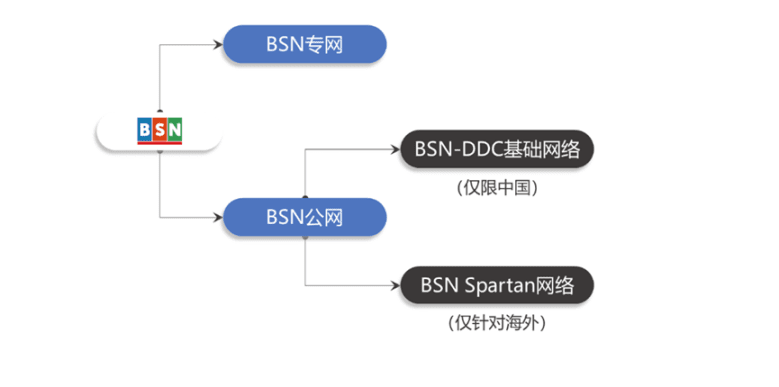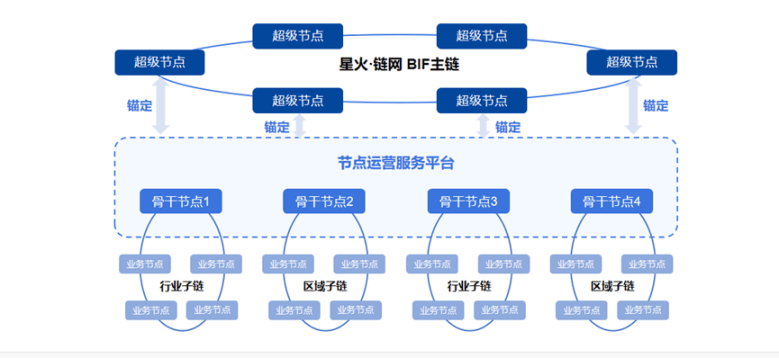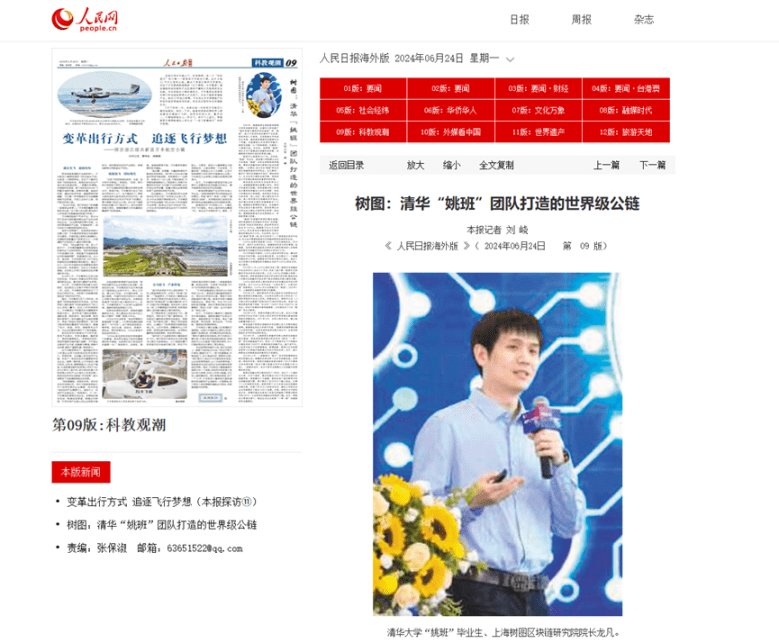Stablecoins are becoming a strategic new track for major global economies, with the US, EU, Hong Kong, and others competing to introduce regulatory frameworks to seize the initiative. However, the issuance of any stablecoin relies on a key underlying infrastructure - public chains.
Against this backdrop, the industry opinion that 'China currently lacks a globally influential public chain, which should be led by central state-owned enterprises' has sparked heated discussions. This view is not groundless, but it also easily overlooks a fact: since blockchain was elevated to a national strategic level in 2016, a blockchain infrastructure network led by a 'national team' aimed at serving the real economy has already formed.
From the global connector BSN, the industrial base 'Xinghuo Chain Network', to the technological cornerstone 'Chang'an Chain', and to the public chain 'exception' Conflux, they collectively form China's unique blockchain landscape. With the increasing urgency for stablecoins, among these networks, which is most likely to break through and become the trust base for China's stablecoin vision aimed at global reach?
To accurately understand China's strategic intentions, it is necessary to redefine the term 'public chain' (public blockchain) in the Chinese context. Directly equating it with permissionless chains can lead to serious conceptual deviations. In China, the 'public chains' promoted at the national level are essentially closer to a 'public infrastructure' or 'trust infrastructure' that is guided by the state, allows multiple participation, but is ultimately controllable.
Among these, the ones with relatively high influence in the industry include the Blockchain Service Network (BSN), Xinghuo Chain Network, 'Chang'an Chain', and the recently discussed public chain Conflux. PANews conducted an inventory analysis of these blockchain networks to see who is more likely to become the foundation for China's stablecoin.
Blockchain Service Network (BSN): Multi-framework adaptation, focusing on the non-token concept.
In 2018, BSN was jointly initiated by the National Information Center, China Mobile, China UnionPay, Beijing Hongzao Technology, and other units. It is a public blockchain infrastructure. Currently, it consists of BSN private and BSN public networks, where BSN private network mainly serves enterprises, primarily as the 'BSN Distributed Cloud Management Platform', supporting the deployment of a distributed cloud system environment based on blockchain in various physical IDC data centers, public clouds, and private clouds.

The BSN public network leans more towards the concepts of public chains and consortium chains that we are familiar with. In the BSN public network system, it is divided into BSN-DDC basic network (an open consortium chain for China) and BSN Spartan network (a public distributed cloud service network composed of non-token public chains), targeting overseas markets.
Currently, within the DDC network system, there are several open consortium chains, such as Yan'an Chain, Wenchang Chain, Tai'an Chain, Wuhan Chain, and Mobile Chain. These networks adopt frameworks such as Ethereum, EOS, FISCO BCOS, and Corda, with main application scenarios including NFT (digital collectibles), distributed domain names, distributed identity (DID), and trusted data notarization. The DDC network system is a consortium chain system without token design, and on-chain service fees need to be recharged with fiat currency, targeting the domestic market.
The consensus mechanism of the BSN Spartan network leans towards public chains like Ethereum, but the difference remains that it is a non-token public chain. Currently, BSN Spartan consists of three sub-chains based on Ethereum, Cosmos, and PolygonEdge. As of August 4, the daily transaction volumes of these three chains were 1068, 844, and 938 respectively.
Overall, the core innovation of BSN lies in multi-framework adaptation, with the unified adaptation and management capabilities for dozens of mainstream blockchain underlying frameworks (including consortium chains and public chains) globally. Through a standardized adaptation mechanism, developers can choose different underlying chains in a 'plug-and-play' manner without worrying about the complex deployment and operation details, akin to a universal 'operating system' for the blockchain world. However, the fact that BSN has yet to open a token mechanism in response to the increasing demand for stablecoins may become a limitation. He Yifan, executive director of the BSN Development Alliance and CEO of Hongzao Technology, has repeatedly expressed strong opposition to virtual currencies, believing that virtual currency is a huge Ponzi scheme.
'Xinghuo Chain Network': Supported by the Ministry of Industry and Information Technology, focusing on the industrial sector.
According to official information, 'Xinghuo Chain Network' is a national-level blockchain new integrated infrastructure system led by the Ministry of Industry and Information Technology, spearheaded by the China Academy of Information and Communications Technology, in conjunction with several large enterprises and institutions such as Beihang University and China Unicom.
From an architectural perspective, 'Xinghuo Chain Network' is divided into two layers: the first layer consists of the main chain made up of supernodes, used for managing identities, public data, or other legal assets and supervision that the state may provide in the future. The second layer consists of sub-chains linked by backbone nodes, connecting various industry or regional applications.

It is worth noting that 'Xinghuo Chain Network' is a permissioned public blockchain network, and from the current information available, it also does not have a token design. Similarly, 'Xinghuo Chain Network' is divided into a domestic mainnet and an international version known as the ASTRON network. Currently, the supernodes that have been established for 'Xinghuo Chain Network' include Xiamen and Liuzhou, with backbone nodes in Jiaozhou, Hengqin, Suzhou, etc.; international nodes include Malaysia, Macao, and others. The access threshold for nodes in 'Xinghuo Chain Network' is relatively high and requires local government support for construction.
'Xinghuo Chain Network's application scenarios are highly focused on the industrial sector, including: full lifecycle traceability of high-end manufacturing products, collaborative management of complex supply chains, digital identity authentication and predictive maintenance of industrial equipment, and trusted sharing and trading of industrial data.
Chang'an Chain (ChainMaker): Written into policy planning multiple times, with participation from state-owned enterprises and internet giants.
'Chang'an Chain' is led by the Chang'an Chain Ecosystem Alliance, which is initiated by the Beijing Microchip Blockchain and Edge Computing Research Institute (referred to as 'Microchip Institute') under the guidance and support of the Beijing Municipal Government.
The Chang'an Chain Ecosystem Alliance includes key central state-owned enterprises in critical areas such as the State Grid, China Construction Bank, Industrial and Commercial Bank of China, China Unicom, COFCO Group, and internet giants like Tencent and Baidu. Currently, the number of alliance members has exceeded 50.
Written into the work report of the Beijing Municipal Government. In 2025, in the 'Beijing Blockchain Innovation Application Development Action Plan (2025-2027)', 'Chang'an Chain' is mentioned again.
In addition to its strong background, 'Chang'an Chain' also has significant technical advantages. Officially, it claims that its transaction throughput (TPS) can reach 100,000 levels, capable of meeting the high concurrency demands of large-scale finance, government affairs, and other scenarios.
Conflux (Conflux) was founded in 2018 by MIT PhD Long Fan and others, with academician Yao Qizhi serving as chief scientist and participating in the theoretical design of core algorithms. In January 2020, the Conflux team officially established the Shanghai Conflux Blockchain Research Institute. In October of the same year, the Conflux mainnet was officially launched.
As a complete public chain, Conflux also has a governance token, CFX. Although mainland China has strict regulatory policies on cryptocurrencies, Conflux successfully issued and operates its token CFX, making it a unique 'exception'.
CFX, as a global cryptocurrency, has been listed on multiple mainstream cryptocurrency exchanges, such as Binance, OKX, and Gate.io. Its market price and market capitalization are influenced by various factors, including technological progress, ecosystem development, and macro market conditions. For example, recent positive news about the Conflux 3.0 upgrade and support for offshore RMB stablecoin plans has significantly boosted its token price in the short term.

In addition, the backing of Conflux should not be underestimated. Conflux has been reported multiple times by mainstream official media such as People's Daily and has deep cooperation with several state-owned enterprises, including China Telecom and China Mobile. Additionally, Conflux is collaborating with fintech company AnchorX to explore the issuance of a stablecoin pegged to offshore RMB (AxCNH) to support the cross-border payment needs of countries along the Belt and Road.
Who is more likely to become the technical foundation for stablecoins?
In addition to the aforementioned blockchain networks with strong endorsements, there are also several consortium chains in China, such as State Grid Chain (State Grid), Unicom Chain (China Unicom), Mobile Chain (China Mobile), ICBC Chain (Industrial and Commercial Bank of China), Ant Chain (Ant Group), Zhixin Chain (Tencent), and Zhongxiang Chain Network. Most of these consortium chains are initiated by state-owned enterprises or technology giants and have unique advantages and influence in their respective fields.
But returning to the initial question, does China have a public chain with international influence? As of now, the answer should be empty. The main reason is that most of China's blockchain networks are consortium chains, which have significant differences in consensus mechanisms and economic models compared to overseas public chains like Ethereum and Solana.
Among the existing public chain infrastructures, 'Xinghuo Chain' is most likely to grow into an internationally recognized domestic public chain. From a technical perspective, 'Xinghuo Chain' has characteristics of an internationally accepted public chain, and it also has originality and performance advantages in technology. Its official background and clear offshore RMB stablecoin exploration plan place it in a leading position in the stablecoin race.
In other blockchain networks, 'Chang'an Chain' has also become the underlying architecture for stablecoin issuance. In 2021, its R&D institution, Microchip Institute, signed a strategic cooperation agreement with the Central Bank Research Institute to jointly promote enterprise-level applications of digital RMB based on 'Chang'an Chain'. Additionally, the technical characteristics of 'Chang'an Chain' can support Token design and meet the technical requirements for stablecoin issuance. Its strong ecosystem of state-owned enterprises gives it a natural advantage in promoting stablecoin applications among institutions or in specific scenarios.
Of course, in addition to this, as many listed companies in Europe and America start to use cryptocurrencies as treasury and participate in the governance of public chains, China's public chain may have a third option: to participate in the governance of international mainstream public chains. After all, in a decentralized world, the distinction between national borders often only reflects a percentage difference in computing power.